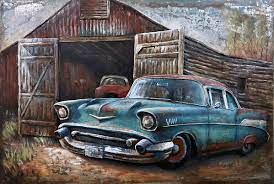Vehicles are an essential aspect of modern life, enabling transportation and connectivity across the globe. From cars and trucks to motorcycles and electric scooters, the evolution of vehicles has significantly transformed how we live, Rent a car in Caleta de Fuste, and travel. This article provides an in-depth look at the various types of vehicles, their technologies, and emerging trends that shape the future of transportation.
1. Understanding Vehicles
A vehicle is any machine that transports people or goods from one place to another. Vehicles can be classified based on several criteria, including their purpose, design, and mode of operation. The primary categories of vehicles include:
- Land Vehicles: Cars, buses, trucks, motorcycles, bicycles, and rail vehicles.
- Water Vehicles: Ships, boats, and submarines.
- Air Vehicles: Airplanes, helicopters, and drones.
2. Types of Vehicles
A. Personal Vehicles
- Cars: The most common form of personal transportation, cars come in various shapes and sizes, including sedans, SUVs, hatchbacks, and coupes. They are typically powered by internal combustion engines (ICE) or electric motors.
- Motorcycles: Two-wheeled vehicles that provide a more agile and fuel-efficient mode of transportation. Motorcycles range from cruisers to sport bikes, catering to different preferences and riding styles.
- Bicycles: A human-powered vehicle that is environmentally friendly and promotes physical fitness. Bicycles can be used for commuting, recreation, and sport.
B. Commercial Vehicles
- Trucks: Used for transporting goods, trucks vary in size from light-duty pickups to heavy-duty freight carriers. They are essential for logistics and supply chain operations.
- Buses: Designed to carry multiple passengers, buses are commonly used for public transportation. They come in various forms, including city buses, school buses, and coaches.
C. Specialty Vehicles
- Emergency Vehicles: Includes ambulances, fire trucks, and police cars. These vehicles are specially designed to respond quickly to emergencies.
- Construction Vehicles: Equipment like bulldozers, excavators, and cranes, essential for building and infrastructure development.
D. Electric and Hybrid Vehicles
- Electric Vehicles (EVs): Powered entirely by electric batteries, EVs produce no tailpipe emissions and are increasingly popular due to their environmental benefits. Brands like Tesla, Nissan, and Chevrolet lead the market.
- Hybrid Vehicles: Combine an internal combustion engine with an electric motor, improving fuel efficiency and reducing emissions. Popular hybrids include the Toyota Prius and Honda Insight.
3. Vehicle Technologies
A. Internal Combustion Engines (ICE)
Traditional vehicles primarily rely on ICE, which burn fuel to create energy. While widely used, these engines contribute to pollution and are less efficient compared to electric systems.
B. Electric and Hybrid Powertrains
Electric and hybrid vehicles use advanced technologies such as lithium-ion batteries and regenerative braking systems to enhance efficiency and reduce emissions. Innovations in battery technology are critical for improving the range and performance of EVs.
C. Autonomous Vehicles
Self-driving technology is rapidly advancing, with companies like Waymo and Tesla testing autonomous vehicles. These vehicles use sensors, cameras, and artificial intelligence to navigate and operate without human intervention.
D. Connected Vehicles
Modern vehicles are increasingly equipped with connectivity features, enabling communication with other vehicles, infrastructure, and the internet. This connectivity enhances safety, navigation, and entertainment.
4. Trends Shaping the Future of Vehicles
A. Sustainability and Eco-Friendliness
There is a growing demand for sustainable transportation solutions. As concerns about climate change intensify, manufacturers are investing in electric and hybrid technologies, promoting the use of alternative fuels like hydrogen and biofuels.
B. Mobility as a Service (MaaS)
MaaS is an emerging trend that integrates various transportation services into a single accessible platform. Users can plan, book, and pay for multiple transportation modes, such as ridesharing, public transit, and bike rentals, enhancing convenience and efficiency.
C. Advances in Safety Features
Modern vehicles are equipped with advanced safety technologies, including automatic emergency braking, lane-keeping assist, and adaptive cruise control. These features aim to reduce accidents and improve overall road safety.
D. Urbanization and Smart Cities
As urban areas continue to grow, smart city initiatives are integrating transportation planning with technology. This includes the development of smart traffic management systems, electric public transit, and infrastructure for EV charging.
5. Conclusion
Vehicles play a vital role in facilitating transportation and connectivity in our daily lives. As technology continues to evolve, the landscape of personal and commercial transportation will change dramatically. With a focus on sustainability, safety, and innovation, the future of vehicles holds exciting possibilities that can enhance mobility while addressing environmental concerns. Understanding the types of vehicles, their technologies, and emerging trends is essential for navigating this dynamic industry.
